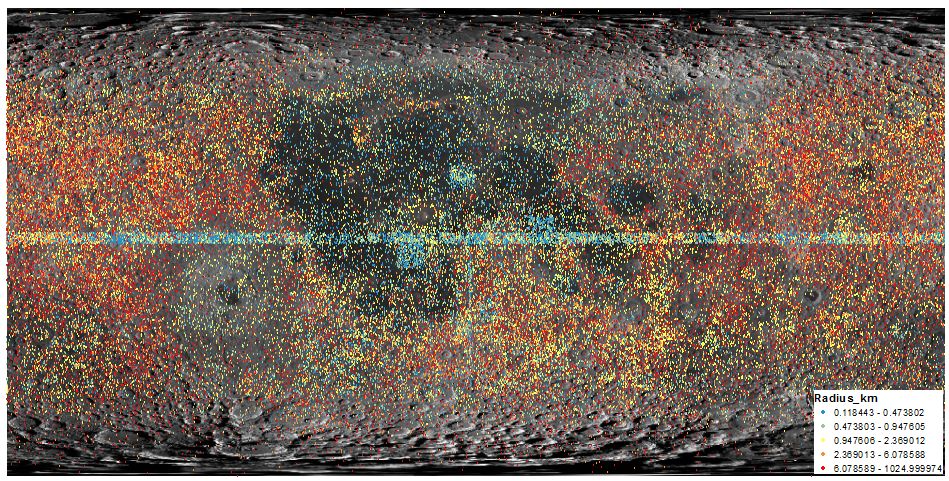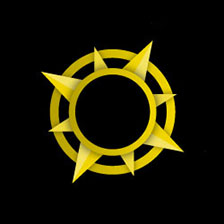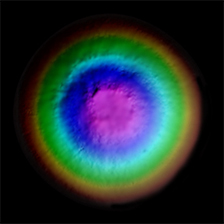Moon Crater Database v1 SalamuniÄcar
- Primary Authors
- Goran SalamuniÄcar
- Originators
- Sven LonÄariÄ, Arne Grumpe, Christian Wöhler, Erwan Mazarico (for previous LU60645GT)
- Publisher
- USGS Astrogeology Science Center
- Publication Date
- 2012-08-08
- Abstract
- Product Information: The catalogues by McDowell, Rodionova, and Head have been integrated with the results of a Crater Shape-based interpolation crater detection algorithm (CDA) and Lunar Orbiter Laser Altimeter (LOLA) data, resulting in the initial catalogue with 60,645 Lunar impact craters (Salamuniccar, et al., 2012). Using a Hybrid CDA: a modified digital elevation map (DEM) reconstruction method used as a step in an existing CDA based on Hough transform, the catalogue has been additionally extended using two Chandrayaan-1 Moon Mineralogy Mapper (M3) images and two excerpts of the Lunar Reconnaissance Orbiter (LRO) Wide Angle Camera (WAC) global optical image mosaic. As a result, the number of craters inside these four regions increased considerably from 1754 (as available in the previous LU60645GT catalogue) to 19 396 craters (as available in the resulting new LU78287GT catalogue). The resulting LU78287GT catalogue of 78,287 craters is currently the most complete catalogue of Lunar impact craters. This catalogue is globally complete up to â¼Dâ¥8 km, and for each crater provides at least latitude, longitude, and diameter. In the Excel version, all attributes from manually assembled catalogues are additionally included, as well as properties computed from the topography (e.g. depth-diameter ratio). Mission and Instrument Information: The U.S. National Aeronautics and Space Agency (NASA) launched the Lunar Reconnaissance Orbiter (LRO) spacecraft to the Moon in June 2009 (Tooley et al., 2010) carrying a variety of instruments including the Lunar Orbiter Laser Altimeter (LOLA), which continues to return high-resolution images of the lunar surface from its eccentric polar mapping orbit (Petro et al., 2019). The LOLA has collected over more than 6.5 billion measurements of global surface height with a vertical precision of ~10 cm and an accuracy of ~1m (Mazarico et al., 2013). With such highly accurate global coverage, the resulting topographic map has become the reference geodetic framework for the lunar community and has led to the highest resolution and most accurate polar digital elevation models (DEMs) to date. The Lunar Reconnaissance Orbiter Camera (LROC) is a system of three cameras mounted on the LRO that capture high resolution black and white images and moderate resolution multi-spectral images of the lunar surface. One of three cameras in the LROC system is a wide-angle camera (WAC) that provides images at a scale of 100 meters/pixel in seven color bands over a 60 km swath. The LROC data sets are produced by the LROC Team at the Tempe campus of Arizona State University. The LROC data sets are produced by the LROC Team at the Tempe campus of Arizona State University (ASU, 2019). References: Arizona State University (ASU) (2019). About Lunar Reconnaissance Orbiter. https://www.lroc.sese.asu.edu Mazaricoa, E., Neumann, G. A., Barkerb, M. K., Gossens, S., Smith, D. E., & Zuberd, M. T. (2012). Orbit determination of the Lunar Reconnaissance Orbiter. Journal of Geodesy, 86(3), 193â207. https://ntrs.nasa.gov/archive/nasa/casi.ntrs.nasa.gov/20180007208.pdf Petro, N. E., Keller, J. W., Cohen, B. A., & McClanahan, T. P. (2019). Ten years of the Lunar Reconnaissance Orbiter: Advancing lunar science and context for future lunar exploration. Paper presented at the 50th Lunar and Planetary Science Conference, Lunar and Planetary Institute, Houston, TX. https://www.hou.usra.edu/meetings/lpsc2019/pdf/2780.pdf SalamuniÄcar, G., LonÄariÄ, S., Pina, P., Bandeira, L., & Saraiva, J. (2013). Integrated method for crater detection from topography and optical images and the new PH9224GT catalogue of Phobos impact craters. Advances in Space Research, 53(12), 1798-1809. http://doi.org/10.1016/j.asr.2013.11.006 SalamuniÄcar, G., LonÄariÄ, S., & Mazarico, E. (2012). LU60645GT and MA132843GT catalogues of Lunar and Martian impact craters developed using a Crater Shape-based interpolation crater detection algorithm for topography data. Planetary and Space Science, 60(1), 236-247. http://doi.org/10.1016/j.pss.2011.09.003 Tooley, C. R., Houghtoon, M. B., Saylor Jr., R. S., Peddie, C., Everett, D. F., Baker, C. L., & Safdie, K. N. (2010). Lunar Reconnaissance Orbiter mission and spacecraft design. Space Science Reviews, 150(1), 23â62. https://doi.org/10.1007/s11214-009-9624-4
- Purpose
- The catalogue can be used for evaluation of crater detection algorithms (CDAs) and other planetary science studies.
Contact and Distribution
- Format
- Digital Elevation Model, Vector Data
- Access Constraints
- None
- Access Scope
- MRCTR, PDS
- Use Constraints
- Please cite authors
- Supplemental Information
- http://dx.doi.org/10.1016/j.asr.2013.06.024, https://pds-imaging.jpl.nasa.gov/portal/lro_mission.html, https://pds-imaging.jpl.nasa.gov/volumes/lro.html
- Native Data Set Environment
- ESRI Arcinfo
- Astrogeology Theme
- Craters, Geographic Information System (GIS), Topography
- Temporal Keywords
- Amazonian, Hesperian, Noachian
- Mission Names
- Lunar Reconnaissance Orbiter
- Instrument Names
- LOLA, WAC
- Online Package Link
- https://astrogeology.usgs.gov/search/map/moon_crater_database_v1_salamuni_car
- External File Size
- 26224618
- Online File Link
- http://astropedia.astrogeology.usgs.gov/download/Moon/Research/Craters/GoranSalamuniccar_MoonCraters.zip
- Access Instructions
- GIS application needed for viewing files.
- Contact Address
- 2255 N. Gemini Drive
- Contact City
- Flagstaff
- Contact State
- AZ
- Contact Postal Code
- 86001
- Contact Email
- astroweb@usgs.gov
Data Status and Quality
- Time Period of Content (start)
- 2010-11-10
- Time Period of Content (stop)
- 2012-08-08
- Currentness Reference
- Publication date
- Progress
- In Work
- Update Frequency
- As needed
- Logical Consistency
- Coordinates and diameters are consistent with all data sets used (topographic as well as optical).
- Completeness Report
- This catalog is complete up to â¼Dâ¥8 km.
- Process Description
- In short, craters from all previous manually created catalogs and numerous additional craters detected using CDAs have been integrated into the single catalog. In details, it is described in [1] and preceding publications.
Lineage
- Process Date
- 2012-08-08
- Source Title
- Lunar Orbiter Laser Altimeter
- Source Online Linkage
- {http://pds-geosciences.wustl.edu/missions/lro/lola.htm,http://pds-geosciences.wustl.edu/missions/lro/default.htm,https://pds-imaging.jpl.nasa.gov/volumes/m3.html,https://www.isro.gov.in/Spacecraft/chandrayaan-1}
- PDS Status
- PDS 4 In Progress
- Attribute Accuracy Report
- Best Effort
- Horizontal Positional Accuracy Report
- Best Effort
Geospatial Information
- Target
- Moon
- System
- Earth
- Minimum Latitude
- -90
- Maximum Latitude
- 90
- Minimum Longitude
- -180
- Maximum Longitude
- 180
- Direct Spatial Reference Method
- Vector
- Object Type
- Grid Cell
- Point and Vector Object Count
- 19396
- Quad Name
- Radius A
- 1737400
- Radius C
- 1737400
- Control Net
- LOLA
- Vertical Coordinate System Units
- Meters
- Map Projection Name
- Simple Cylindrical
- Latitude Type
- Planetocentric
- Longitude Direction
- Positive East
- Longitude Domain
- -180 to 180


















